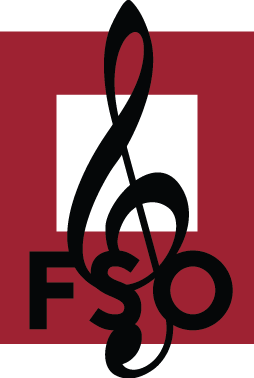
In accordance with TakeLessons, a search service for music teachers and lessons, and our music education mission, the Frederick Symphony Orchestra is introducing the very basics of classical piano through time:
Baroque (1600-1745): After the Medieval and Renaissance eras, composers further explored the ability to express human emotions through highly ornate and colorful compositions. Orchestras and opera also evolved from undefined chamber music ensembles to shows on primitive stages with large audiences.
Important Piano Composers:
- Johann Sebastian Bach
- George Frideric Handel
- Georg Philipp Telemann
- Domenico Scarlatti
- Francois Couperin
Characteristics:
- Most music was written for the harpsichord because the piano wasn’t a popular instrument yet.
- Use of trills and other musical ornaments was frequent.
- Popular compositional forms included fugue, dance suite, toccata, and concerto.
- The uses of terraced dynamics (when there are big and/or sudden dynamic contrasts) and counterpoint (when multiple melodic lines weave together to form harmonies) were common.
Fun Fact: Listen to Handel’s Organ Concerto in G Minor, HWV 289 during our next concert, Symphonic Pipes at Hood College, on March 17, 2017.
Classical (1750-1820): Famous European composers changed the direction of classical music during this era. It became about stricter textures, simple composition forms, and homophony (when melody and accompaniment are distinct). This was the forefront of what would become known as “traditional classical” music.
Important Piano Composers:
- Joseph Haydn
- Wolfgang Amadeus Mozart
- Ludwig van Beethoven
- Franz Schubert
- Muzio Clementi
Characteristics:
- The piano became popular, leading to the downfall of the harpsichord.
- Lightness and elegance of notes were prized after the serious and grand music of the Baroque era.
- There was less emphasis on counterpoint in a shift to melodic music and accompaniment.
- More variety within pieces in terms of keys, rhythms, and dynamics was common.
- Alberti bass was popular, especially at the beginning of this era.
Romantic (1860-1920): After the Early Romantic period, composers let inspiration dictate their compositions, which made for more emotional and dramatic pieces as opposed to structured, traditional compositions. The focus was shifted to human emotion once more.
Important Piano Composers:
- Johannes Brahms
- Pyotr Ilyich Tchaikovsky
- Frédéric Chopin
- Robert Schumann
- Claude Debussy
Characteristics:
- Music began reflecting emotions and moods, becoming much more expressive.
- Specific tempo and dynamic markings came into the spotlight.
- Folk melodies and nationalism were prominent.
- The use of program music, which is music that tells a story, became more popular.
- Music was more rhythmically and harmonically complex to compose and play.
Fun Fact: Listen to Tchaikovsky’s Serenade for Strings during Symphonic Pipes, too.
Modern (1920-present): Also known as Contemporary Classical, this era found diversity between all periods of classical music during the beginning of the 20th century. Composers intensified the search for new sounds of their era. They went back to 18th century harmonies, styles, and directions and became influenced by other genres, including jazz, folk, rock, and pop.
A revolution was spearheaded by updating everything about traditional classical music with an American influence using the latest technology. The movement was eventually labeled “neo-classical.”
Important Piano Composers:
- Arnold Schoenberg
- Igor Stravinsky
- Charles Ives
- Aaron Copland
- Sergei Prokofiev
Characteristics:
- Composers experimented with many styles in search for new modes of expression.
- The use of polyrhythms and mixed meters developed rhythmic complexity.
- There was a greater use of dissonance with more complicated harmonies and chord clusters.
- Composers experimented with electronic music and amplification to find a new sound.
- Compositions detailed explorations of atonality (when there is no discernable key center) and polytonality (when there are multiple key centers at the same time).
For more information on classical music, the FSO’s upcoming concerts, and fun volunteer opportunities, subscribe to our weekly blog below:
